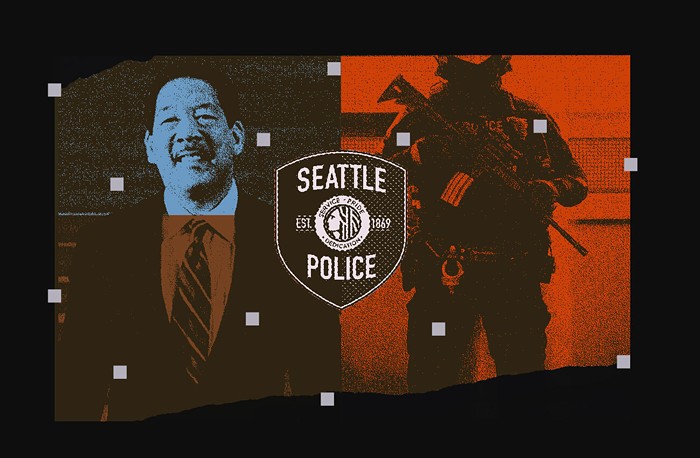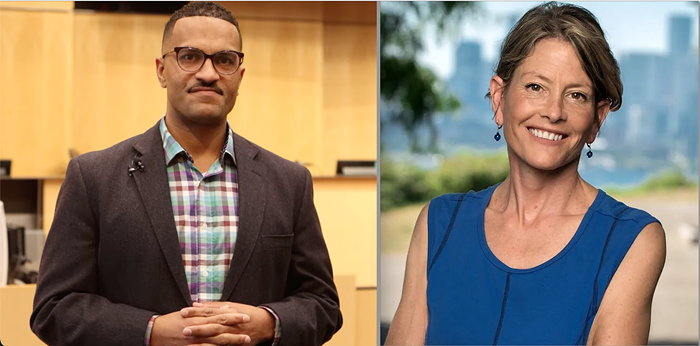
The Seattle Department of Transportation has known about growing cracks within the West Seattle Bridge since February. The situation grew more dire in March, when SDOT determined that the lanes would have to be shut down. But, more inspections showed growing cracks and a growing problem that prompted SDOT to close the bridge entirely. The Seattle City Council was only informed of the problem after this realization, Director Sam Zimbabwe told the council in a briefing on Monday.
Last week, with only a three-hour warning to the council, SDOT announced the complete closure of the West Seattle high-rise bridge. The lower bridge is now only open to transit, emergency vehicles, and commercial freight.
Councilmember Lisa Herbold, who represents West Seattle, described being completely "shocked at the short notice." Zimbabwe lamented that "despite diligence, this came on very quickly."

The West Seattle Bridge is only 36 years old, and bridges like the West Seattle Bridge generally have an expected life span of at least 75 years. After noticing routine cracking in 2013, SDOT increased its inspections. Starting in October of 2019, the agency noticed more, unprecedented crack growth.

By February 2020, engineers alerted SDOT that there was severe concern about the type of cracks in the bridge and the frequency of their growth. It was determined that the West Seattle Bridge would be reduced down to two lanes of traffic. But, between the beginning of March and March 19th, the cracks expanded, engineers contracted by SDOT found.
"These caused extreme concern with leaving any vehicular live load on the bridge," Matt Donahue, a director of roadway structures at SDOT, said. In other words, having any kind of traffic on the bridge would be a risk. Three days later, on March 23, SDOT closed the bridge. According to SDOT, the call to close the bridge was made that morning when Donahue observed that the cracks had grown even more since that Friday. The council was not notified about any of this.
"We found out just hours before the general public did," Gonzalez said. "I’m disappointed that that proactive engagement did not occur and it took this severe action for the department to acknowledge that moving forward it needs to engage city council members on issues of such significant import."
Donahue said he had taken the weekend to determine what to do.
He explained that the "angular cracks" that developed in the bridge were "shear cracks," Donahue said. "That kind of deterioration will grow to failure without warning." He described it as "a failure mechanism that could happen very, very quickly without the bridge deforming or changing shape."

In laymen's terms, the bridge could collapse without warning because of these cracks in the concrete. That necessitated the sudden all-encompassing closure of the bridge.
Councilmember Tammy Morales asked whether people using the lower bridge would still be safe if there is still a risk that the bridge could collapse.
"We don’t think there’s a risk that the bridge will collapse at any moment," Donahue said. "We think it’s stable. But, because of the cost of being wrong about that we are continuing to monitor it."
There's also concern about whether the increased traffic on the lower bridge will compromise its stability. SDOT is closely monitoring traffic on that bridge.
In the short term, SDOT will do "temporary shoring" to make the bridge safe for long term repairs.
As this and other next steps go forward, there will be significant budget impacts for SDOT. Before that happens, there will need to be more studies on what short term and long term repairs will cost, Zimbabwe explained.
Despite an entire presentation on the subject, SDOT did not give a timeline on repairs until prompted by Gonzalez.
The short answer is that SDOT can't give any timeline for short or longterm repairs.
"I don't have as much information as I'd like to have," Zimbabwe said. "Those will go hand-in-hand with budgetary impacts. I do know it's not going to be a short duration. It's going to be something that will, unfortunately, outlast the public health emergency we find ourselves in."
In the meantime, West Seattle, here are some detours you'll be getting real familiar with:

This story has been corrected to show that SDOT made the decision to shut down the West Seattle bridge entirely the morning of March 23, the same day of the public announcement of the bridge's closure.


















